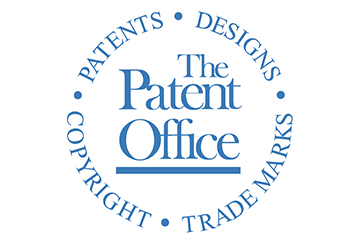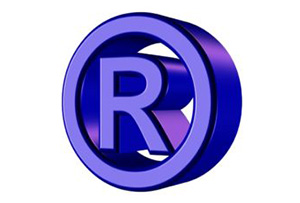AMDOCS v. OPENET: ANOTHER EXAMPLE OF A PATENT ELIGIBLE SOFTWARE INVENTION
The Federal Circuit recently ruled in Amdocs (Israel) Limited V. Openet Telecom, Inc., Openet Telecom Ltd., No. 2015-1180, 2016 WL 6440387 (Fed. Cir. Nov. 1, 2016) (“Amdocs”), that a software patent’s claims were patentable subject matter under 35 U.S.C. § 101 (“§ 101”). This case provides yet another example of what types of software inventions may be patent eligible. This article discusses Amdocs.
Amdocs involved four patents (U.S. Patents, Nos. 7,631,065 (“’065 patent”), 7,412,510 (“’510 patent”), 6,947,984 (“’984 patent”), and 6,836,797 (“’797 patent”), collectively the “patents-in-suit”)) that claim systems, methods and computer programs designed to solve an accounting and billing problem faced by network service providers. The district court granted Openet’s motion for judgment on the pleadings, finding that the patents-in-suit are not directed to patent eligible subject matter under § 101. Amdocs appealed.
In the wake of Alice Corp. v. CLS Bank International, 134 S. Ct. 2347 (2014), courts use a two-part test to determine if the claims of a software patent or patent application are patent eligible subject manner under § 101. The first part of the Alice test requires a determination as to if a claim is directed to an abstract idea. If the first part is not satisfied, then the analysis moves to the second part. The second part of the analysis requires a determination as to if a claim results in something significantly more than a judicial exception. In Amdocs, the Federal Circuit noted that § 101 cases generally follow the step one/step two format, reserving step two for the more comprehensive analysis in search of the “inventive concept.” 2016 WL 6440387 at *4. The Federal Circuit also noted that recent cases suggest that there is considerable overlap between step one and step two, and in some situations, this analysis could be accomplished without going beyond step one. Id.at *4.
In Amdocs, the patents-in-suit taught components arrayed in a distributed architecture that minimizes impact on a network’s resources. Id. at * 2. The network and system disclosed in the patents-in-suit accomplished this by allowing data to reside close to the information sources, thereby reducing congestion in network bottlenecks, while still allowing data to be accessible from a central location. Id.
The Federal Circuit examined the claims of the patents-in-suit and reasoned that the claims are much closer to the claims in BASCOM Glob. Internet Servs., Inc. v. AT&T Mobility LLC, 827 F.3d 1341, 1349 (Fed. Cir. 2016) and DDR Holdings, LLC v. Hotels.com, L.P., 773 F.3d 1245, 1255 (Fed. Cir. 2014) than to the claims in Digitech Image Techs., LLC v. Elecs. for Imaging, Inc., 758 F.3d 1344 (Fed. Cir. 2014) and In re TLI Commc’ns LLC Patent Litig., 823 F.3d 607 (Fed. Cir. 2016). In its analysis the Federal Circuit glossed over step one of the two-part test reasoning that even if the claims of the patents-in-suit are found to directed to an abstract idea under step one, the claims are eligible under step two.
In Amdocs, the Federal Circuit held that the claims of all the patents-in-suit are patent eligible for similar reasons. More specifically, the Court held that the asserted claims of the patents-in-suit are patent-eligible because the distributed architecture of the system entails an unconventional technical solution (enhancing data in a distributed fashion) to a technological problem (massive record flows which previously required massive databases). Id. at * 15. Additionally, the Federal Circuit also reasoned that while the patents-in-suit rely upon some arguably generic limitations, when all limitations of the claims considered individually and as an ordered combination, they provide an inventive concept using the distributed architecture. Id. at * 13.
In the dissenting opinion, Justice Reyna criticized the majority for avoiding step one of the two-part test and failing to determine whether the asserted claims are directed to an abstract idea, or even identifying the underlying abstract idea. Id. at *16. Justice Reyna also criticized the majority on relying on the specification to import innovative limitations into the claims at issue, which as Justice Reyna contends, is insufficient to satisfy step two of the 101 analysis. Id.
Regarding the ‘065 and ‘797 patents, Justice Reyna reasoned that in step one of the Alice test, the claims of the ‘065 and ‘797 patents are directed to an abstract idea. Id. at *22, 27. After identifying the underlying idea, in step two a court must still ask whether the claim is directed to that idea or to a specific means. Justice Reyna agreed with the district court that the claims of the ‘065 and ‘797 patents are not patent eligible because they fail to recite any structure or process limiting them to a particular means of combining accounting data from different sources. Id. at * 22, 27.
Regarding the ‘510 and ‘984 patents, Justice Reyna reasoned that in step one of the Alice test, the claims of the ‘510 and ‘984 patents are directed to an abstract idea. Id. at *25. Justice Reyna then found that the asserted claims of the both ‘510 and ‘984 patents are directed to a particular process that improves upon the manner in which systems collect and process network usage information, and the claimed process is limited in a specific way. Id. at *23, 25. As such, the asserted claims of both the ‘510 and ‘984 patents are patent eligible. Id. at *25.
Amdocs is yet another example of a patent eligible software invention. The law related to software related inventions continues to evolve post-Alice and the § 101 landscape will continue to come into focus as more precedential decisions are issued involving patent eligible software claims. As technology evolves software will continue to be critical in creating new and innovative improvements over existing technology. Patent protection is and will remain as an integral component in protecting the resources spent developing software. To learn more about Derek Fahey, the author of this article, click HERE.












